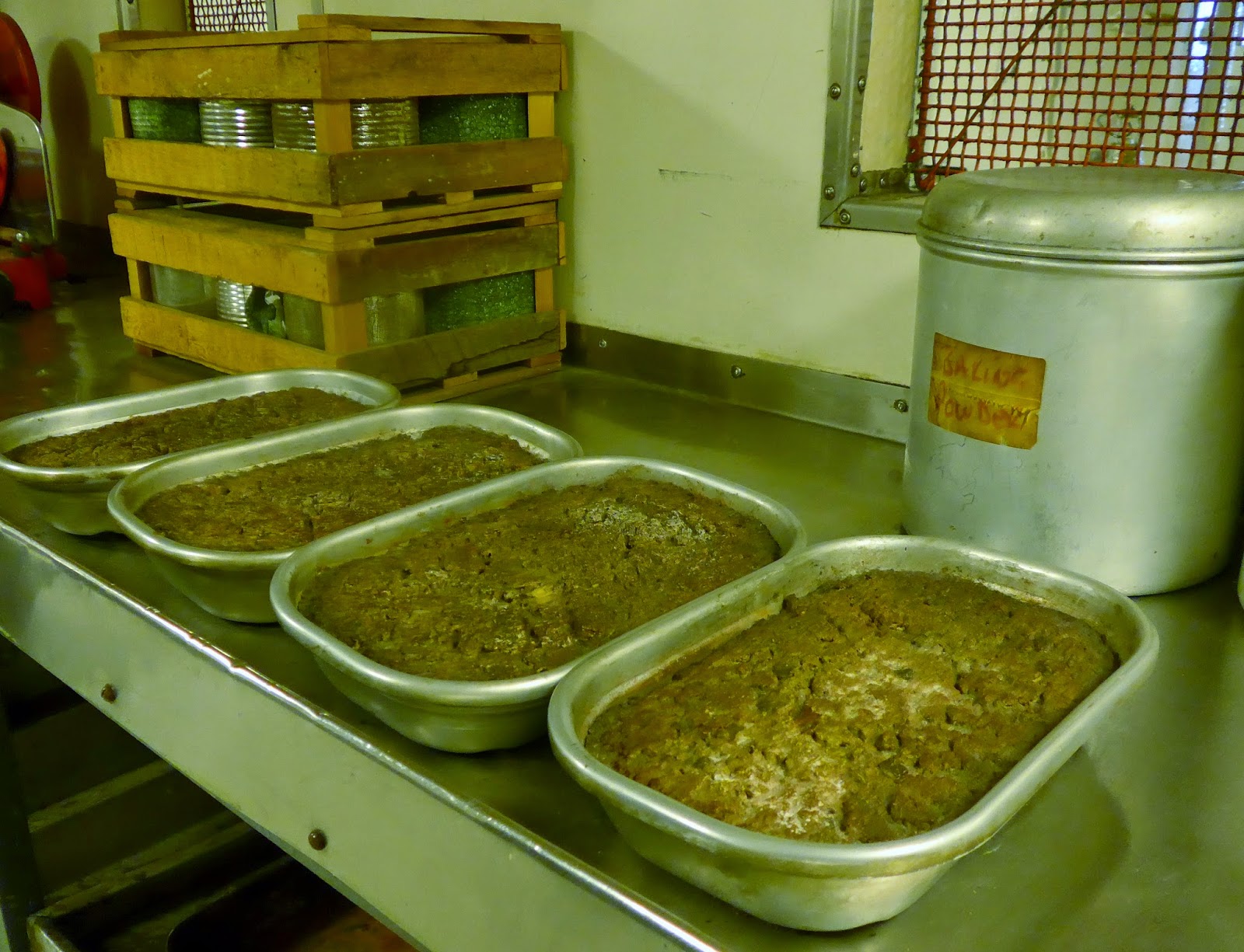Who'd have thought that when we walked down the gangway
and stepped onto the quarterdeck of HMS Belfast,
it would have connected so much to family life at home.
Obviously, we don't have that view from our front door.
But we do have a kitchen...
...with a fridge, not quite as well stocked as this.
Mind you, we're not catering for up to nine hundred and fifty
and not able to pop to the shops, being away at for months at a time.
Fish. It must be Friday.
A question I never found out the answer to, was whether they caught their own.
18,000 meals were prepared each week.
Not sure what this dish is.
Food that looks like this doesn't seem to need a 'Do Not Touch' sign.
It's kind of lost its appeal,
suddenly I don't feel hungry any more.
Bread is such a staple.
For those of you who like statistics, each day six bakers produced...
...fifty-two loaves, 1,440 rolls,
plus pies, pastries and cakes.
They didn't just bake for their crew,
but also baked to cater for men on board smaller ships that sailed in the fleet.
The galley on board HMS Belfast is great as you get to wander right through it
and meet the crew,
and meet the crew,
without feeling at all guilty about not offering to lend a hand.
Whatever they ate, there's still the same old perennial argument
about who does the washing up.
With all that food on stored board,
it attracted mice and rats.
Meet Frankenstein, the ship's cat.
Now which is worse...
...the rat in the sack of potatoes
...or a cat climbing all over the food.
Washing up done, time to think about the laundry.
Before the 1950s the crew had to wash their own clothes in a bucket.
I bet they were pleased to get washing machines installed?
But you had to be careful!
You were warned.
This appeals.
Neatly folded, 'sorted into piles', clothes.
No scrabbling around for clean uniform on a Monday morning...
...and trying to work out whose black socks are whose.
Then there's the ironing.
This isn't done on a Sunday night in front of the TV!
You've had your dinner, cleared away, washed up.
Washing and ironing sorted.
Now time for a little relaxation.
A snooze and letter writing.
Looks private.
Dominoes and shoe polishing.
Games, magazines and newspapers.
There weren't many places to go on board HMS Belfast.
Where you hung out, you also slept.
So mind your head on that hammock above!
There were so many men, in order to accommodate them all,
many hammocks were hung amongst the ship machinery.
A quiet night's sleep?
Frankenstein was comfy though.
This is one of the most creative uses of taxidermy that I've ever seen.
Washed and dressed, it was important you were ready for action.
Yes, this really is a museum mannequin!
One last connection with urban life in the 21st century.
Shopping!
The NAAFI
Home from home,
Kit Kats, Bountys, Cadbury's chocolate, Brylcreem, Bovril and Ovaltine.
And of course,
Fishermans Friends.
Were they though? They're not my friend.
So if you came on board expecting war, battles, guns, explosions, planning, strategies, operations, missions
and the like,
hold fire, we'll get there.
There is so much to see on HMS Belfast. There are nine decks.
HMS Belfast is open all week, it's free for kids and sitting on deck provides one of the best picnic views in London.



















































